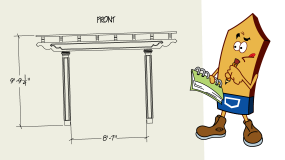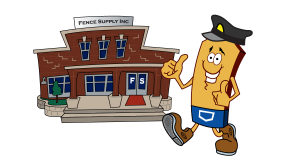Fence posts are one of the most important parts of your wood fence when it comes to withstanding the stresses of time and nature. They bear the burden of holding the wood fence against the wind and whatever else nature throws at it. Installing your posts correctly so they are sturdy will help your fence last longer.
Wood post installations are not only a dig-and-fill kind of job. You need time, attention, and patience. Make sure you go through the following steps for your fence.
Establishing the area within you property line
The first thing you should do is determine the perimeter of your fence. Get a map of your property from your local government, showing your property line. It’s also a good idea to check with the government if you need any permits to build your fence. Use the map to plot out the perimeter of your fence on, or just inside of, your property line.
Setting and measuring the wood fence perimeter
Using the lot plan as reference, set your fence lines and mark them by using wooden stakes and string. Be sure that the fence line doesn’t go over the area of your property. Then measure each fence line and jot it down to use for planning the number of fence posts.
Determining the number of fence posts
The number of wood fence post depends on the measurement of each fence line, the type of your fence, and the kind of wood panels you’ve decided on.
Wood fence posts may be lined up 6 to 8 feet apart depending on the type of your fence. For privacy fences where the wood panels are placed next to each other, 6 feet is more appropriate in order to have enough post strength to carry the weight of your wood panels.
The type of wood in your fencing panels also plays a big part in the proper spacing of your fence. The heavier the wood variety, the smaller the distance between your posts should be. This is again for the purpose of having enough support for the weight of your fence.
When you have decided on the proper spacing between your fence posts you may then figure out how many fence posts you’ll need. Just figure out how many you need for each side of the property line, then add them all up. For any sides where you’ll have a gate, note that you should have two lines, one on each side of the gate (don’t forget to include the gate post!).
Corner posts should be buried deeper to the ground (at least 2/3 of the entire length of the post) compared to your line posts (at least 2 feet). Considering this, your corner posts should be longer and if possible larger than your line posts. The following formula will help you compute the number of fence posts you need. The gate posts should be larger and longer as well.
Lining up wood posts
There are two ways to choose on how to line up your wood posts. The first is to start from a corner post and line up each post equal to the distance you have decided in between posts. In this method, you may have the last post with a different distance to the corner post compared to the spacing of the others. This is the more economical way of lining up fence posts.
The next method is to space your posts equally. This will give you better weight distribution but might be more costly compared to the first method since you may need to cut your wood railings if the spacing is a nonstandard length.
Mark the points where your posts will be buried using wooden stakes. After this, you can now proceed to the installation of your posts and the entire fence.



